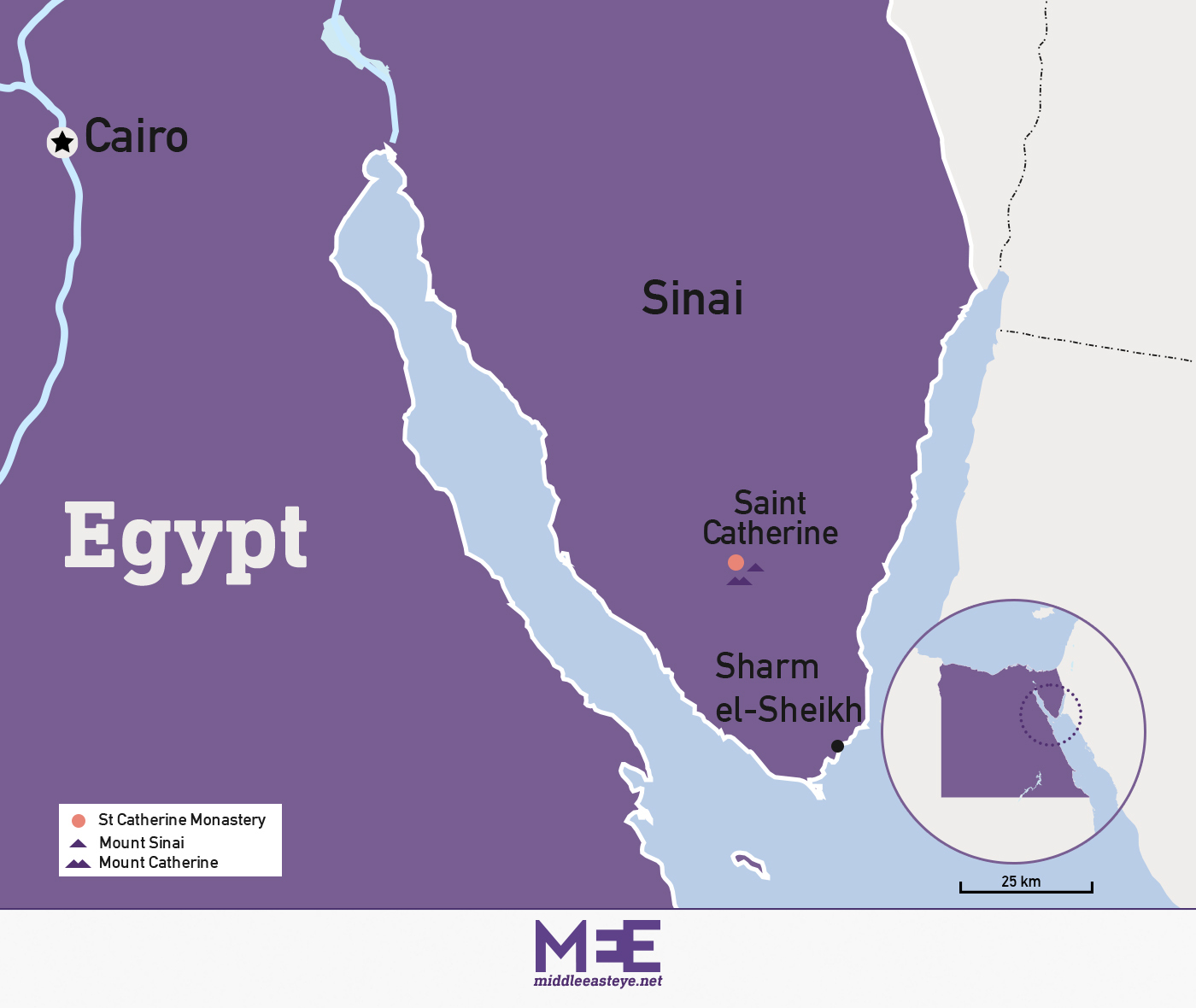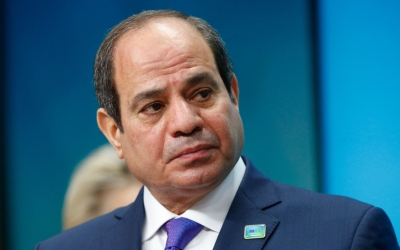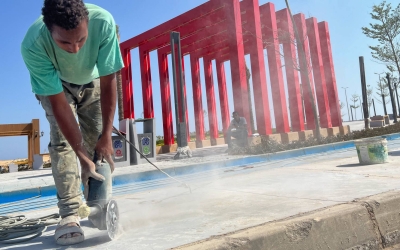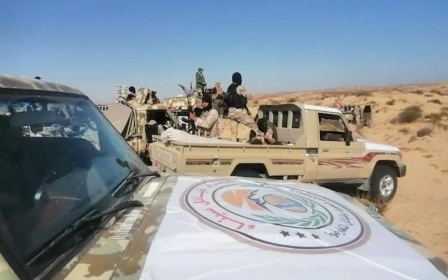Cop27: Egypt 'bulldozing' Unesco World Heritage Site 100km from summit
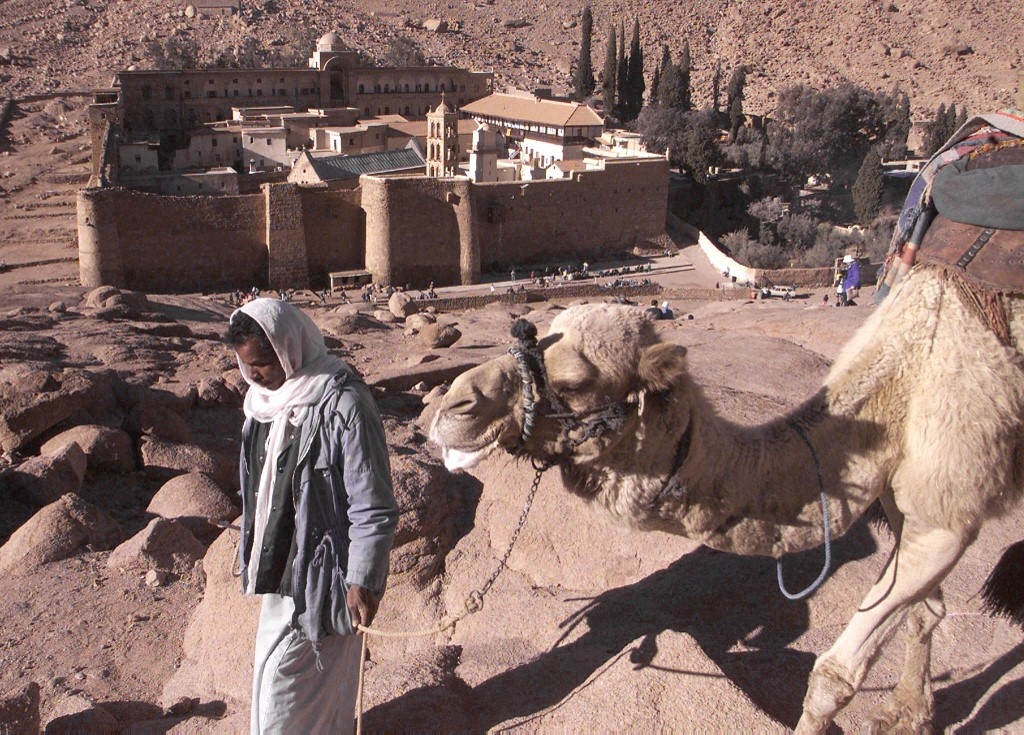
As government-paid bulldozers razed St Catherine's local cemetery in the winter of 2021 in Egypt's South Sinai, members of the indigenous Jabaleyya tribe stood watching in disbelief.
"People spent the entire night picking the remains of their dead relatives from what the bulldozers have done," said Mohannad Sabry, an author and researcher who has written extensively on Egypt's Sinai peninsula.
'The government have proven that for them, the local community is just a bunch of stray dogs who can move up to the mountain and burn in hell'
- Mohannad Sabry, author on Sinai
The destruction of the cemetery was to pave the way for construction that is part of the Great Transfiguration Project, officially launched by the Egyptian government in March 2021 with the stated aim of turning South Sinai into a tourism hub.
But the majority of the project, which is roughly 70 percent complete, is to be housed in the St Catherine nature reserve, a Unesco-listed World Heritage Site that includes the ancient St Catherine's Monastery and Mount Sinai, a site revered by followers of Islam, Judaism and Christianity. The monastery stands at the foot of Mount Horeb, where, according to the Old Testament, Moses received the Tablets of the Law. The mountain is revered by Muslims as Jebel Musa.
A number of experts, including Sabry, have accused the Egyptian Ministry of Housing, Utilities and Urban Communities, which is overseeing the project, of violating World Heritage Site regulations by carrying out construction they say will undermine the historic and religious character of the city, as well as expelling the indigenous Bedouin population - with no published plans for compensation.
New MEE newsletter: Jerusalem Dispatch
Sign up to get the latest insights and analysis on Israel-Palestine, alongside Turkey Unpacked and other MEE newsletters
Egyptian government officials have previously refuted the claims in statements to Middle East Eye, insisting the project will not harm the heritage of the city and its surrounding environment.
But John Grainger, former EU project manager for the nature reserve, the St Catherine Protectorate, between 1996 and 2003, signed - along with Sabry - an open letter in March stating that the current project violates Unesco's criteria for a World Heritage Site and that the plan should mean the reserve is placed on the World Heritage in Danger list.
"We're talking about tens of thousands of cubic metres of concrete," Sabry told MEE.
The new buildings include at least five hotels and hundreds of villas and private houses.
"The centre of the town has been transformed and razed completely, and the construction goes all the way to the gates of the monastery," he added.
A spokesperson for the Unesco World Heritage Centre told MEE that their team is at the "reactive monitoring" stage. "The World Heritage Centre has initiated a dialogue with the Egyptian authorities in order to collect all the elements necessary for our experts to issue their objective opinion on the situation," the spokesperson said.
King Charles III is the royal patron of the London-based Saint Catherine Foundation, which supports conservation work at the monastery. Neither the foundation nor Buckingham Palace responded to requests for comment.
'Profit from every metre'
Sabry, the author of Sinai: Egypt's Linchpin, Gaza's Lifeline, Israel's Nightmare, said the project is being carried out at the expense of the local Jebaleyya tribe, the original inhabitants of the city, known historically as the Guardians of St Catherine. All Bedouin houses that stood in the way of construction have been razed, he said, and residents turfed out.
"They demolished our house and gave us compensation, but it is not enough to buy a small piece of land from the government or the new housing units built in St Catherine," Emad Sallam, a 41-year-old Bedouin tour guide related by marriage to the Jebaleyya, told MEE.
"Others were not given anything, as they were unable to provide legal documents for the houses they owned. A lot of the Bedouins in Sinai claim ownership to their land by building their houses on it."
He added that the project threatens the family’s main source of income as tour guides, cooks, vendors, bazaar and camel owners, and hospitality workers.
"The government wants to profit from every metre," he said.
While Abdel Fattah el-Sisi's government has provided verbal reassurances to those affected that they will be compensated, it has given no details on how, when, or by how much. The only alternative for the Bedouins so far has been to move up the mountains in the vicinity of St Catherine.
"If the government authorities have really proven anything, they’ve proven that for them the local community is just a bunch of stray dogs who can move up to the mountain and burn in hell," Sabry said.
Destroying the Bedouin way of life
Ahmed Al-Jebaly, a 55-year-old St Catherine local and owner of a Bedouin guest house, said his community was not consulted on the project.
“We all support development, but we should be asked about our opinions first,” he told MEE. “The engineers who will come and build the new houses as if they are Bedouin houses never actually lived in Bedouin houses. We were born and lived all our lives in Bedouin houses. Their model of living is not suitable for us and will change our way of living.”
Jebaly said that his town has been neglected for decades, and successive governments have failed to improve its infrastructure, particularly sewage, healthcare and education.
“They only remembered it when they wanted to profit from the place. We will be part of business and slowly we will be put on the side and treated like strangers,” he said, expressing his fear that he will lose his only source of income, tourism, due to the new project.
The town of St Catherine has “a very niche sort of tourism”, according to Sabry.
“The tourist who comes wants to ride a camel, go into the valley, the monastery, climb Mount Sinai - all of these services are provided by the Bedouins. And the tourists want to stay at the local Bedouin guest house,” he told MEE.
By replacing the system with hotels and a tourism project that excludes the local community, the government would be “not just disrupting the system, but killing their main source of income”.
Environmental impacts
Jebaly said the new project will be highly polluting, unlike the original city, which attracts visitors because it's peaceful and unspoilt.
“People from all over the world come here because there is no pollution, but when they [the authorities] build thousands of rooms, hotels and chalets, there will be pollution. All these places will need water, electricity and gas, but from where?”
Many trees have already been uprooted to make way for buildings or roads, he added.
In addition to the damage caused to the local population, the authorities have built a 70km highway to connect the administrative city of al-Tur, on the gulf of Suez, with the ancient town.
According to the Sinai experts' open letter, the highway runs through the valley of Hebran, posing significant environmental risk to the nature reserve.
"This highway destroys an area designated by Egypt's government as a nature protectorate,” an expert was quoted in the letter as saying. "It cuts through the protected area and splits it in two, causing environmental ruin."
The Sisi government is also planning to build another road through Wadi Isla, "regarded as the most remote, most beautiful and most biologically rich wadi in the entire peninsula of South Sinai", the letter reads.
Local wildlife, including the critically endangered Sinai Baton Blue butterfly, will also be put at risk, it adds.
"Such destruction of an area supposedly designated for conservation calls into question Egypt’s entire strategy of environmental protection."
Civil society silenced
On Sunday, world leaders will descend on Sharm el-Sheikh, 100km south of the project site, for the UN annual climate summit, Cop27. No one from St Catherine will be attending.
The government of President Sisi, a former army general, has fought a war on armed insurgency in Sinai for nearly nine years. Violent armed groups in the region escalated their attacks on the armed forces after Sisi’s coup against his democratically elected predecessor, Mohamed Morsi, in 2013.
The army has not only targeted militant groups, however, but also carried out large-scale attacks on the local Bedouin population, particularly in North Sinai, where the insurgency is based. The security measures have now extended to South Sinai, with a strict media blackout imposed on the entire peninsula and a relentless crackdown on journalists and researchers attempting to cover the conflict from the perspective of the local population.
Civil society groups representing the local Bedouins have been silenced, and only the army’s narrative has been allowed, said Ahmed Salem, head of the London-based Sinai Foundation for Human Rights.
“Freedom of speech is a luxury in Sinai. In the midst of large-scale repression, people are preoccupied with their safety,” he told MEE. “It is no surprise that no Sinai-based civil society is represented in Cop27."
Shahenda Naguib contributed to this report from Cairo.
This article is available in French on Middle East Eye French edition.
Middle East Eye delivers independent and unrivalled coverage and analysis of the Middle East, North Africa and beyond. To learn more about republishing this content and the associated fees, please fill out this form. More about MEE can be found here.


